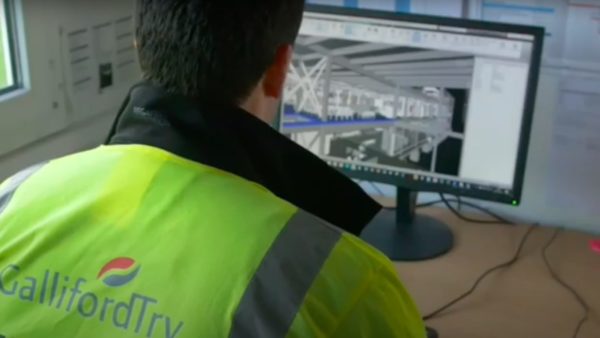The use of drones is increasing, but contractors should be careful when deploying them, particularly when using them to monitor progress on sites, warns David Savage.
Increasingly, construction companies are using unmanned aerial vehicles (UAVs), or drones as they are more commonly known, for a variety of purposes including aerial surveys and monitoring the activities of staff and subcontractors on the worksite, in particular their compliance with health and safety policies.
The commercial benefits of using drones on the construction site are not in dispute, but the problem is, their use has a high potential for infringing the privacy rights of individuals whose images are captured by the technology.
Under data protection law, individuals must be informed of how their personal data (ie their image) is being processed. Covert “spying” on employees or subcontractors would, therefore, be completely unlawful.
While it may be easy to inform employees and subcontractors that drones are in use, a major issue is that on many occasions where the drone is operating from a high vantage point, individuals unconnected with the building site are unlikely to realise that they are being recorded.
It is therefore important to devise methods of providing individuals with notice that the drone is in use and how their images may be used and disclosed.
The UK data protection authority (DPA) – the Information Commissioner’s Office – suggests that this could involve wearing highly visible clothing identifying yourself as the UAV operator, or placing signage in the vicinity of the area in which you are operating the drone.
Informing individuals of how you are using drones is only one part of the puzzle, however. Companies must also have a legal ground under data protection law to use drones and this is the trickiest part.
There are two common legal grounds that companies tend to rely on: the consent of the individual; and legitimate business interests. However, in most circumstances it will be impossible to obtain valid consent of employees as consent must be “freely given” which is viewed as impossible in the employment context.
Companies cannot argue that the use of drones is in their “legitimate business interest” if it prejudices the rights and freedoms or legitimate interests of the affected individuals – something that is very likely if drones are used without having due regard to individuals’ privacy.
What, then, can construction companies do to reduce the risks of privacy intrusion so that their use of drones will not be unlawful?
Conduct a privacy impact assessment (PIA) before undertaking to use UAV technology. A PIA can identify and reduce the privacy risks of projects that involve personal data.
UAVs should not be used continually – it is essential that the recording on the UAV can be switched on and off when appropriate.
Ensure that any data you have collected is stored securely, for example by using encryption, and that the data is retained only for the minimum time necessary for its purpose and disposed of appropriately at the end of this time period.
Reduce the risk of collateral intrusion by using a device that has restricted vision so that its focus is only on one place.
It is also important to note that the use of drones may also trigger an obligation to notify local DPAs. In a number of European countries it may also be necessary to obtain approvals from the local DPAs which can be a time-consuming and complicated exercise.
There may also be serious employment law consequences of introducing drones on to the building site. It may well constitute a change in the terms of employment which could require explicit consent of the staff and potentially consultation with, or approval from, works councils or trade unions.
Poll highlights scale of the issue
Charles Russell Speechlys engaged YouGov to carry out research which reveals the extent to which drones are taking off in business, despite poor knowledge of the rules surrounding their use.
One in three business decision makers (34%) said the technology was either already in use in their industry, or would be in the future.
More than half (55%) of poll participants who predicted the use of drones in their industry said they lacked knowledge about the rules and regulations, such as in relation to security, privacy, aerial trespassing and personal responsibility.
“On many occasions where the drone is operating from a high vantage point, individuals unconnected with the building site are unlikely to realise that they are being recorded.”
David Savage is head of construction at law firm Charles Russell Speechlys
Under data protection law, individuals must be informed of how their personal data (ie their image) is being processed. Covert ‘spying’ on employees or subcontractors would, therefore, be completely unlawful.– David Savage, Charles Russell Speechlys















